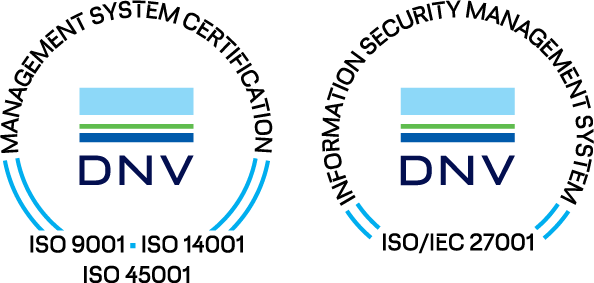RAW incineration facility PS45
The RAW incineration facility PS45 is located at Jaslovské Bohunice site as a part of the Facility for Treatment and Conditioning of RAW in the premises of the existing building 809. The RAW incineration facility was constructed on the basis of an issued building permit that became effective in July 2019 and it was put into operation after successful completion of active commissioning tests in February 2022.
The RAW incineration facility was designed using the principles of modern incineration plants. The incineration consists of the thermal decomposition of solid and liquid RAW in a two-stage incineration plant with an automated incineration process under a permanently maintained negative pressure regime, in order to achieve a significant volume and mass reduction. The resulting incineration product is ash and fly ash.
Main components of the RAW incineration facility PS45 include the rotary furnace as the first stage and the thermal reactor as the second stage of thermal treatment of RAW. RAW dosing is carried out via belt conveyor with packaged RAW, screw conveyors, or injection. The length of the incineration process and the time the waste remains in the rotary furnace is controlled by the furnace´s rotation speed so that sufficient retention time is created to allow for complete thermal decomposition of the waste being incinerated. The resulting flue gases are passed through a refractory pipe to a horizontal flue gas exchanger, in which the waste heat from the incineration process is transferred to the cooling medium and the flue gases are cooled to a temperature suitable for entering the flue gas into the filtration and purification system.
A combination of dry purification technologies, combined with mechanical separation of pollutants from the flue gases in four stages, is used to filter and clean the flue gases produced in the incineration process. In the first stage of flue gas purification, pre-separation of acidic pollutants, solid pollutants and separation of nitrogen oxides is in progress out using the Neutrec® technology. This technology consists of dosing sorbents in automatically controlled mass quantities into the flue gases flowing through the flue pipe, thereby chemically binding them and converting them into a solid phase.
The second stage of flue gases purification occurs when the flue gases pass through the fabric sleeve filter, where the mechanical separation of solid pollutants particles carried by flue gases from the furnace incineration chamber and particles of all sorbents dosed into the flue gases during cleaning takes place. Cleaning of the sleeve filter surfaces from the collected particles is carried out by shock reverse blowing-out of filter surfaces with compressed air. The released particles are subsequently collected in the filter discharge chutes.
A dioxin filter is used in the third stage of flue gas purification process. It separates highly stable organic substances, such as polychlorinated dibenzodioxins [PCDDs] and polychlorinated dibenzofurans [PCDFs] and residual heavy metals, especially mercury [Hg].The third stage of flue gas purification, the so-called post-purification stage, is implemented by the collection (adsorption) of the above-mentioned substances on the surface of the sorbent granules that form the filling of the dioxin filter bag.
The fourth stage of flue gas purification occurs when the flue gas passes through the last, securing fabric sleeve filter. The fabric of this sleeve filter has an efficiency of 99.99%. The PS45 RAW incineration facility has an autonomous control system with automatic regulation of the incineration process, threshold level alarms, continuous monitoring of the technological process and evaluation of the controlled process conditions and parameters.
The facility’s installed technology includes modern systems for monitoring of radioactive discharges, monitoring of aerosols in the area, monitoring of effective dose rates in the working environment and monitoring of chemical emissions to check and control the individual limit values in accordance with the applicable Slovak legislation.


















